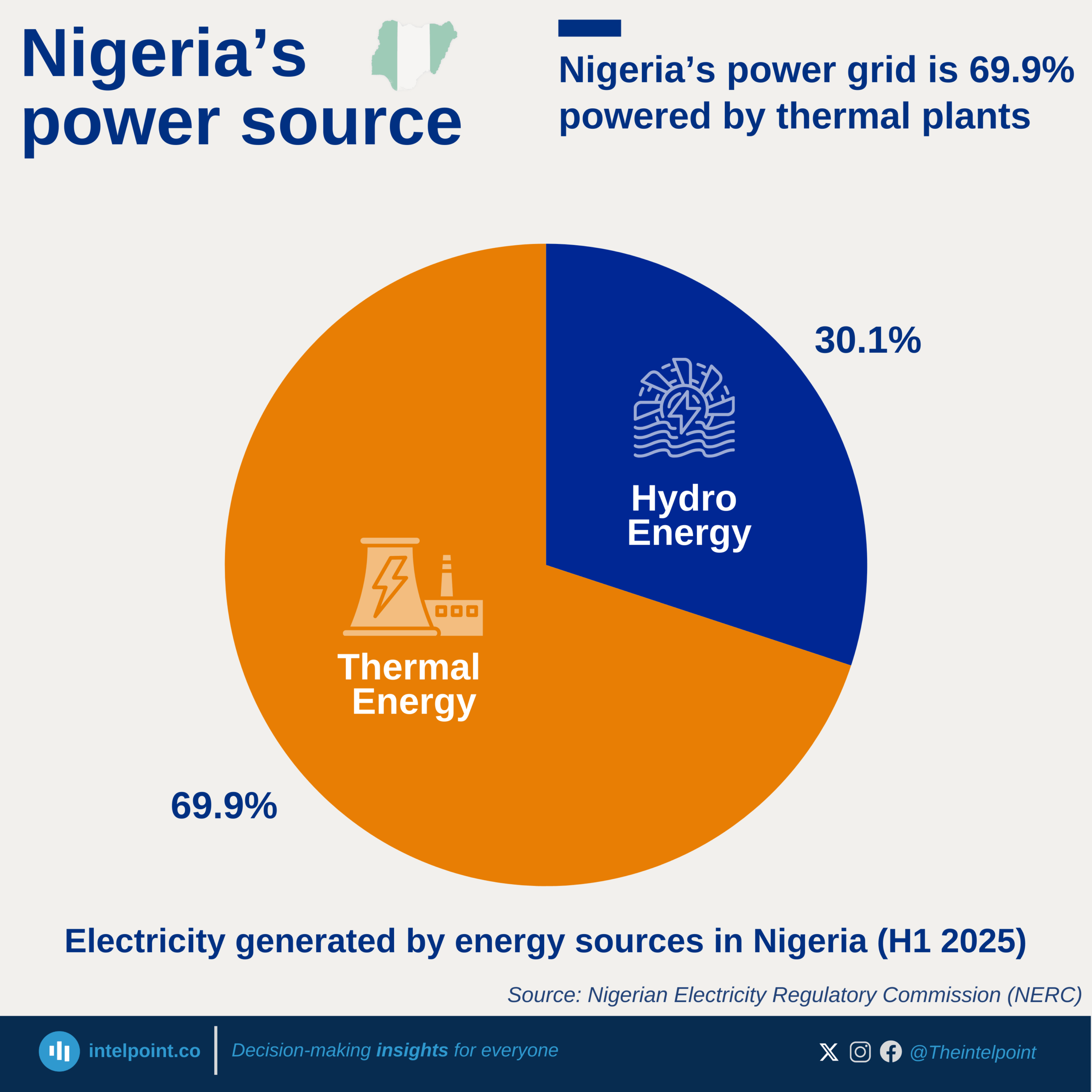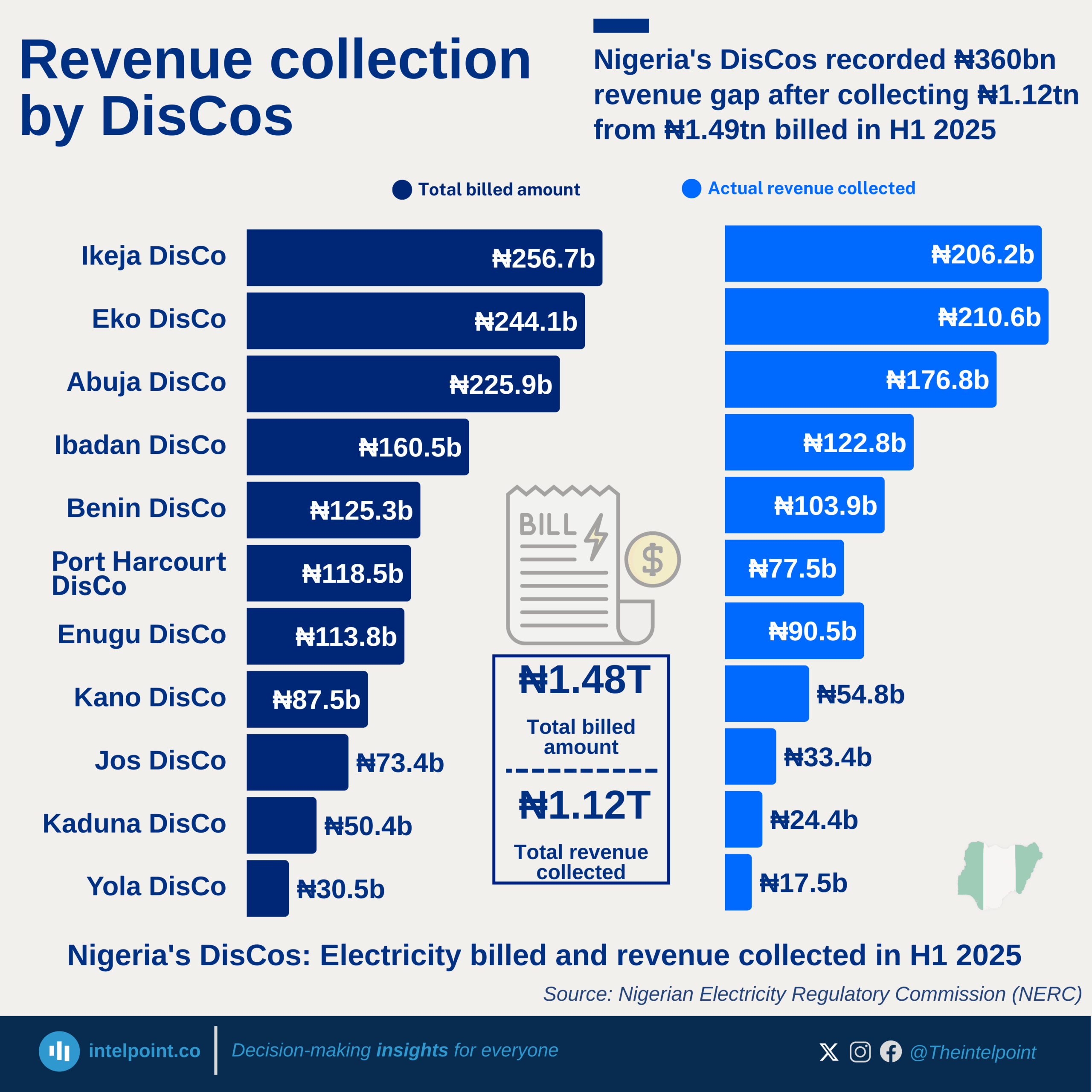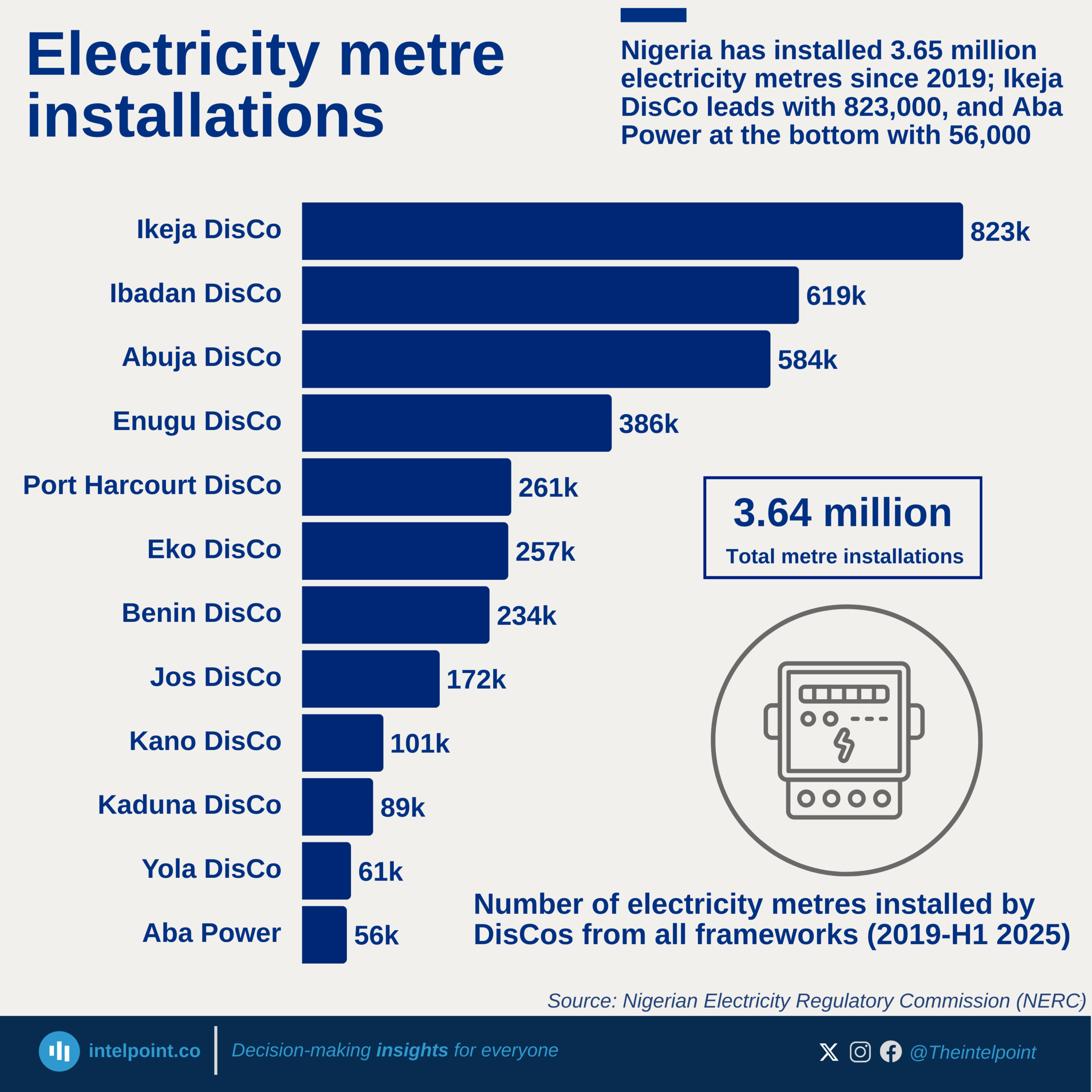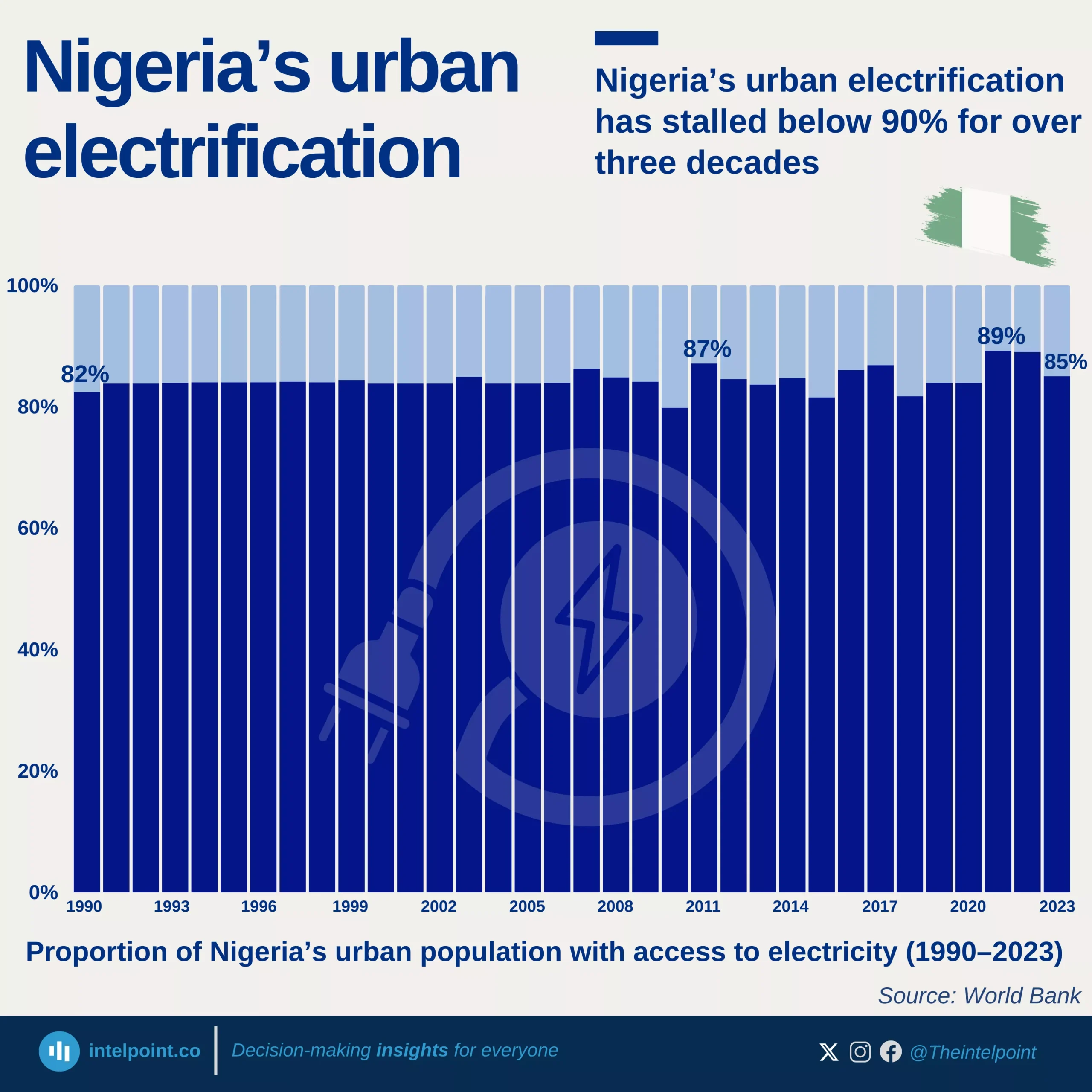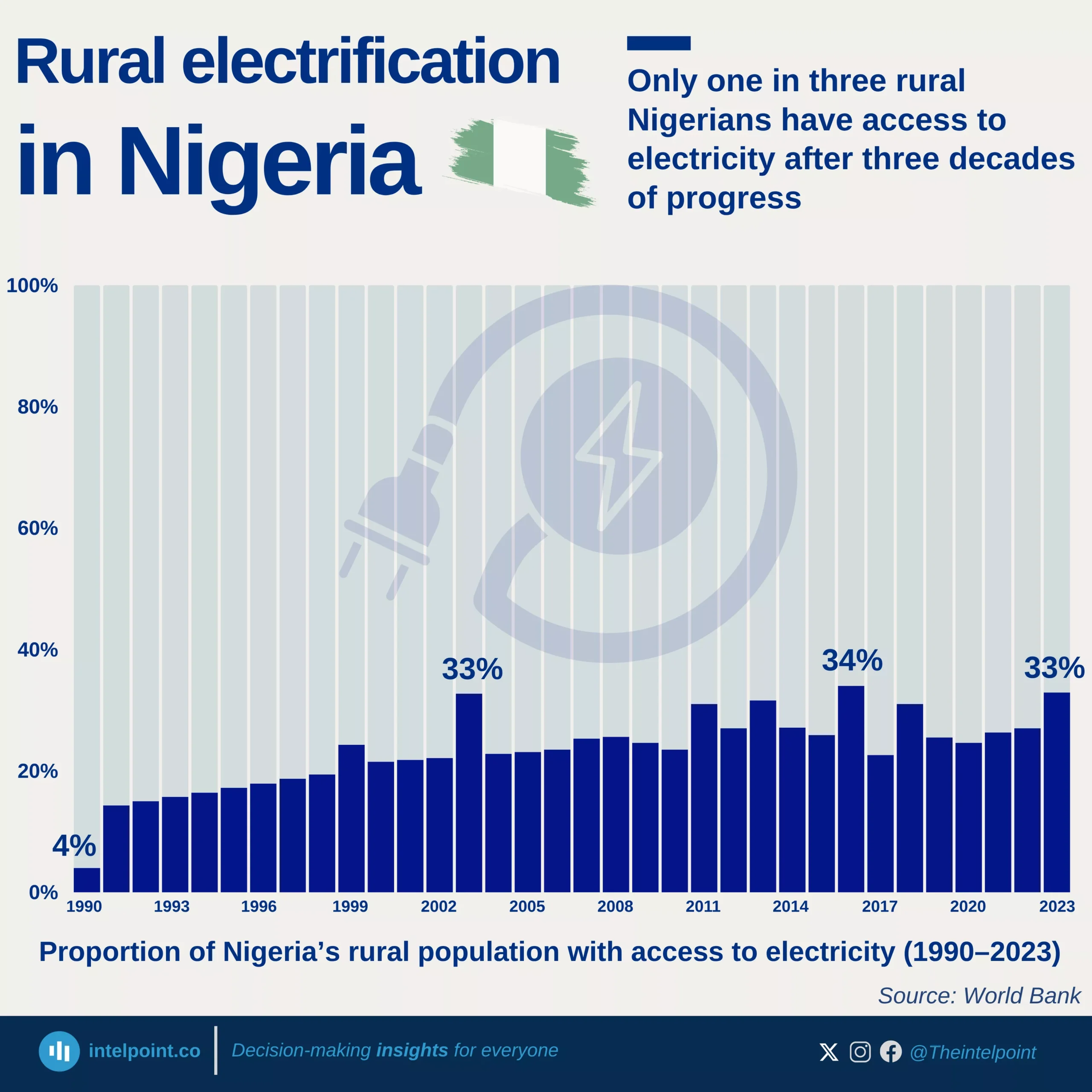Nigeria’s electricity distribution companies (DISCOs) generated ₦1.07 trillion revenue in 2023 — double 2020's amount and 3.8x that of 2015. From 2015 to 2023, revenue has grown from ₦279b to ₦1.07t, while customer base has increased by over 5m, from 7m to 12.1m.
